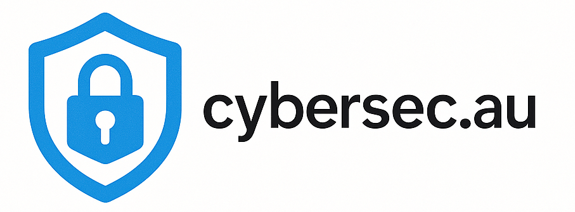Security incident response is the systematic approach to managing and addressing cybersecurity incidents when they occur. For Australian businesses, having a well-defined incident response plan is crucial for minimizing damage, ensuring compliance with notification requirements, and maintaining business continuity during security events.
🚨 Key Incident Response Benefits
- Minimizes damage and recovery time from security incidents
- Ensures compliance with Australian notification requirements
- Preserves evidence for forensic analysis and legal proceedings
- Maintains stakeholder confidence through professional response
NIST Incident Response Framework
The NIST Cybersecurity Framework provides a structured approach to incident response with four key phases:
1. Preparation
Foundation phase for effective incident response:
- Incident response plan: Documented procedures and workflows
- Team formation: Designated incident response team members
- Tool deployment: Security monitoring and analysis tools
- Training programs: Regular team training and exercises
- Communication plans: Internal and external communication procedures
2. Detection and Analysis
Identifying and analyzing potential security incidents:
- Event monitoring: Continuous monitoring of security events
- Alert triage: Prioritizing and validating security alerts
- Incident classification: Categorizing incidents by severity and type
- Impact assessment: Evaluating potential business impact
- Evidence collection: Preserving digital evidence for analysis
3. Containment, Eradication, and Recovery
Active response to contain and resolve incidents:
- Immediate containment: Stop the spread of the incident
- System isolation: Isolate affected systems from the network
- Threat removal: Eliminate malware and unauthorized access
- System restoration: Restore systems to normal operations
- Monitoring: Enhanced monitoring during recovery
4. Post-Incident Activity
Learning and improvement after incident resolution:
- Lessons learned: Document what worked and what didn't
- Process improvement: Update procedures based on experience
- Training updates: Enhance training based on real incidents
- Tool evaluation: Assess effectiveness of security tools
- Compliance reporting: Meet regulatory notification requirements
Building an Incident Response Team
Core Team Roles
Incident Response Manager
- Responsibilities: Overall incident coordination and decision-making
- Skills: Leadership, communication, security knowledge
- Authority: Make critical decisions during incidents
Security Analysts
- Responsibilities: Technical analysis and investigation
- Skills: Digital forensics, malware analysis, network security
- Tools: SIEM, EDR, forensic analysis tools
IT Operations
- Responsibilities: System administration and recovery
- Skills: System administration, network management
- Focus: System restoration and business continuity
Legal and Compliance
- Responsibilities: Legal guidance and regulatory compliance
- Skills: Privacy law, regulatory requirements
- Focus: Notification obligations and legal protection
Communications
- Responsibilities: Internal and external communications
- Skills: Crisis communication, stakeholder management
- Focus: Reputation management and transparency
Australian Incident Response Requirements
Notifiable Data Breach Scheme
Under the Privacy Act 1988, Australian organizations must:
- Assessment timeline: Determine if breach is notifiable within 30 days
- OAIC notification: Notify OAIC within 72 hours of determination
- Individual notification: Notify affected individuals as soon as practicable
- Content requirements: Include specific information in notifications
Industry-Specific Requirements
Financial Services
- APRA notification: Notify APRA of material incidents
- ASX disclosure: Continuous disclosure obligations
- Customer notification: Specific customer communication requirements
Healthcare
- Health Records Act: State-specific notification requirements
- TGA reporting: Medical device incident reporting
- Patient safety: Immediate patient safety considerations
Critical Infrastructure
- CISC reporting: Critical Infrastructure Security Centre notification
- Enhanced obligations: Additional reporting and response requirements
- Government coordination: Coordination with relevant agencies
Incident Response Tools and Technologies
Detection and Monitoring Tools
- SIEM platforms: Centralized log analysis and correlation
- EDR solutions: Endpoint monitoring and response
- Network monitoring: Traffic analysis and anomaly detection
- Threat intelligence: External threat feeds and indicators
Investigation and Analysis Tools
- Digital forensics: Evidence collection and analysis
- Malware analysis: Reverse engineering and behavior analysis
- Memory analysis: RAM dump analysis and investigation
- Network forensics: Packet capture and analysis
Communication and Coordination Tools
- Incident management: Ticketing and case management systems
- Secure communications: Encrypted messaging and voice
- Documentation: Incident documentation and reporting tools
- Collaboration: Team coordination and information sharing
Working with Incident Response Providers
Many Australian businesses partner with specialized cybersecurity MSPs for incident response capabilities. Leading providers like Affinity MSP offer comprehensive incident response services including:
- 24/7 incident response hotline and support
- Rapid deployment of incident response specialists
- Digital forensics and malware analysis
- Legal and compliance guidance
- Business continuity and recovery support
Prepare for Security Incidents
Effective incident response requires preparation, expertise, and rapid response capabilities. Partner with Australia's leading cybersecurity specialists for comprehensive incident response planning and support.
Get Free Security Scan